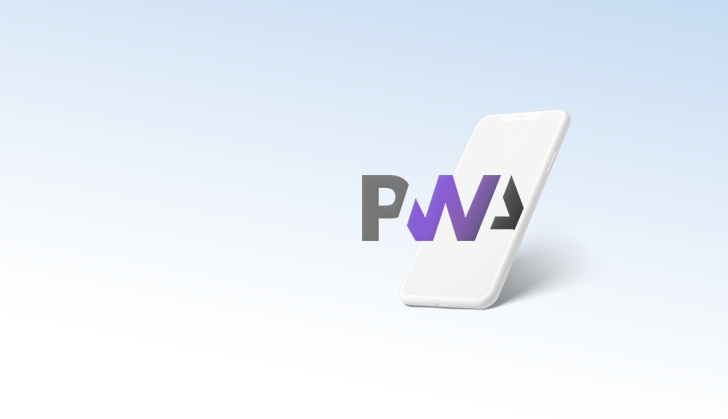Top Web Development Trends in 2024
Staying ahead means keeping up with the latest trends and developments. In the world of web development, a lot is happening at all times.
Here is our take on the top web development trends you need to jump on in 2024 (if you aren’t already).
AI gets more integrated into the development workflow
2023 was undoubtedly the year of AI. It left its mark on every industry and software development wasn’t an exception. ChatGPT and Github Copilot are helping developers everywhere save hours and become more productive.
AI can automate many repetitive and mundane tasks such as code reviews, testing and debugging, leaving developers with more time to focus on more complex and creative tasks, research and learning. According to the 2023 Stack Overflow Developer Survey, increased productivity is the biggest benefit of using AI tools.
AI has the potential to automate, improve and optimise every stage of the development process, including design, coding, testing, and deployment. This can significantly improve the speed and efficiency of delivery, leading to higher-quality products delivered in less time.
As AI takes on a more active role in software development, teams who don’t utilise AI tools in their workflow will be at a disadvantage.
Svelte and Qwik gain traction
Svelte and Qwik are gaining traction in the web development community due to their efficient and modern approaches to building web applications. They offer a combination of improved performance, ease of use, and future-oriented design.
Svelte shifts much of the work to a compile step, rather than relying on the browser. This results in applications that are lighter and faster, as the browser has less work to do.
Qwik focuses on optimising loading times for web apps by loading only the necessary code for the user's immediate interaction. This approach, also known as “resumability”, ensures that even complex applications can start up quickly.
While both frameworks are relatively new, they show great promise. According to the 2022 State of JS, developers expressed the most interest in learning and working with Svelte and Qwik.
Svelte was also the 4th most popular framework in terms of ‘would use again’, right behind the Big 3 - React, Angular and Vue.
Motion UI for a more engaging user experience
Motion UI is a library with pre-designed animations and transitions as well as tools for creating custom ones that designers and developers can easily incorporate into any website or web app. It’s designed to work on any platform and screen size.
Motion UI is more about mere aesthetics though. It’s a way to build more interactive, engaging and intuitive digital experiences.
As technology advances and new design trends emerge, new these will likely influence motion UI in 2024.
Progressive web apps aren’t going anywhere
Progressive Web Apps (PWAs) continue to be a steadfast trend. They might not have had their 'big bang' moment yet, but their adoption is steadily growing.
We saw a lot of changes and improvements for PWAs in 2023 which will drive their growth even more. From push notifications coming to iOS to the release of store.app - the first app store dedicated to PWAs.
PWAs might not be a full replacement for native apps. Still, they’re becoming an increasingly viable alternative, especially for businesses looking to expand their mobile presence without the hefty investment of native app development.
The lines between frontend and backend become blurrier
Many frameworks and new technologies allow developers to handle both frontend and backend within a single environment. This approach simplifies the development process and reduces the need for context switching between different technologies.
Front-end technologies now handle more complex functionalities that were once exclusive to back-end systems. This has also led to a big increase in the complexity of front-end development, requiring knowledge and skills typically associated with back-end processes.
For example, technologies such as Node.js allow JavaScript, traditionally a front-end language, to be used on the server side. Similarly, tools like WebAssembly enable server-side languages to run in the browser.
As a result, the traditional distinction between frontend and backend is becoming increasingly blurry.
Serverless architecture is on the rise
Serverless architecture, also called Function as a Service (FaaS), is a cloud-computing approach that allows developers to write and deploy code without the hassle of managing the infrastructure.
It’s handled by cloud providers like AWS Lambda and Google Cloud Functions who allocate resources on demand. This means you're only billed when an action occurs - there's no charge when your code isn't running. This eliminates idle servers and helps you cut down on costs.
Without the need to manage servers, developers can focus solely on writing code. This can lead to improved productivity and faster time-to-market. What’s more, serverless architecture is incredibly efficient for applications with variable or unpredictable traffic since it scales up or down automatically to meet demand.
Final Overview
And there you have it - our roundup of the top web development trends in 2024.
To stay ahead, it’s important to not only be aware of such trends but also to slowly incorporate them into your work. Here are some practical tips to help you leverage these trends and stay at the forefront of web development:
- Embrace and try different AI tools to find what works best for your workflow.
- Dedicate time to experiment with and learn new technologies.
- Explore Motion UI to add a layer of interactivity to your product.
- If you're a front-end developer, start learning back-end concepts and vice versa. Understanding both sides of development will be invaluable.
- Familiarise yourself with FaaS platforms and their benefits, like AWS Lambda, Google Cloud Functions, or Azure Functions.




